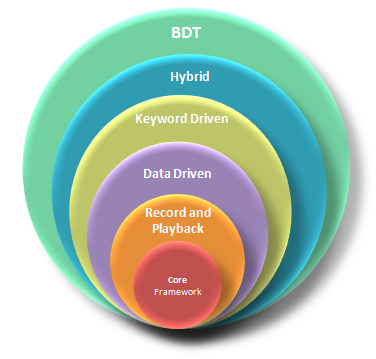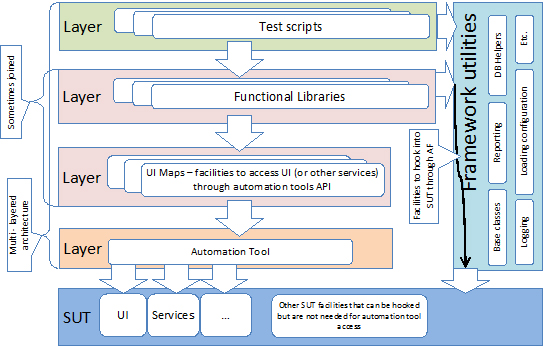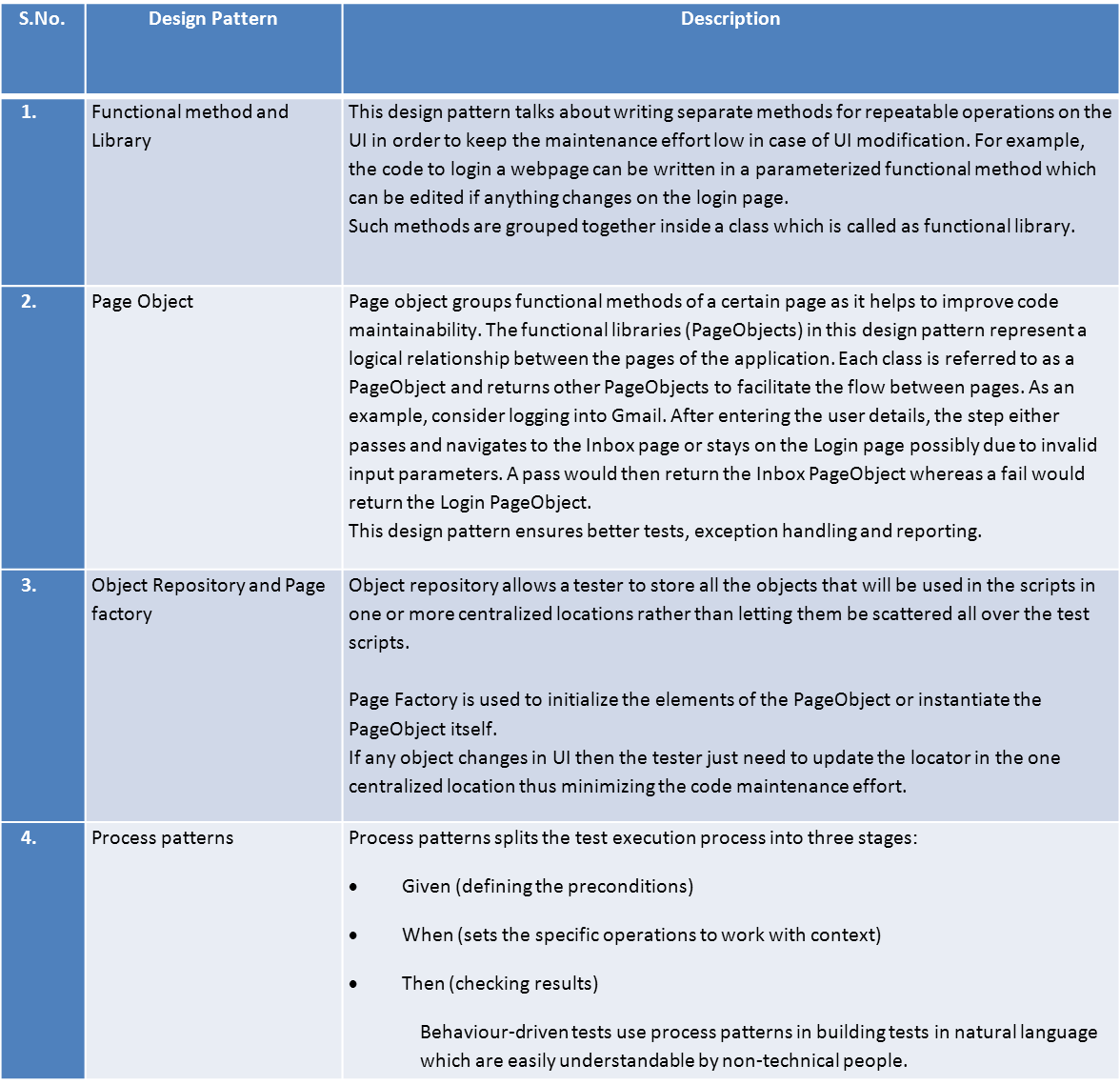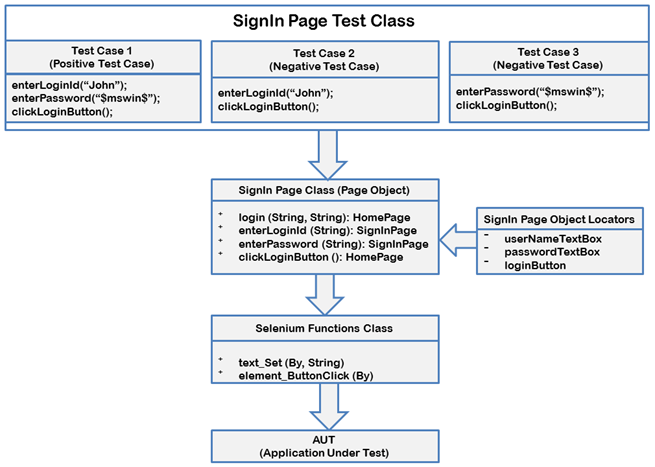Introduction
Software development has a lot of methodologies and standardized approaches to make the development process efficient such as object-oriented programming, domain-driven design, test-driven design, and behavior-driven design, etc. Automation testing, since the very beginning, has been relatively new when it comes to processes and standards. But now the benefits of test automation have helped it gain a lot of exposure in terms of standardization and has been under the process of continuous improvement and evolvement through design patterns. Automation testing is the process of developing software to test software. Hence, the test patterns are loosely similar to design patterns that are used in software development.
Design patterns show how to design the test automation tools so that it will be efficient and easy to maintain. Amongst the biggest test automation challenges is code maintenance. A lot of test automation projects have drowned or were scrapped due to the inability of the frameworks to cope up with the growing codebases. In order to keep the maintenance cost low, the test automation service engineers should strive to minimize the code that they reinvent or create from scratch by using existing functionality for common, generic, or repeated operations.
What are the types of Design Patterns in test automation?
1. Design Patterns in Test implementation
From the test implementation perspective, different design patterns can be understood as types of test automation frameworks
2. Architectural Design Patterns
Multi-Layered Architecture
Meta Framework
3. Functional Design Patterns
Page Object Design Pattern
What are the advantages of using Design Patterns in Test Automation?
The use of design patterns offers below advantages:
- Low maintenance effort and time
- Low maintenance cost
- Enhanced code reusability
- Enhanced reliability
- Structured codebase which is easy to fix and extend
- Improved communication
Conclusion
The design patterns contribute to a major chunk in defining the test automation best practices. The benefits of test automation cannot be reaped effectively without implementing the required design patterns specific to a test automation project.
Follow us on Aspire Systems Testing to get detailed insights and updates about Testing!
- How Generative AI is Revolutionizing the Digital Product Development Lifecycle? - July 19, 2024
- Revolutionizing Contract Management Application for a Global Enterprise Leader with GenAI: A Case Study in Scalability and Efficiency - July 12, 2024
- The Strategic Imperative of Cloud Native Development Services for Modern Businesses - July 2, 2024
















Comments